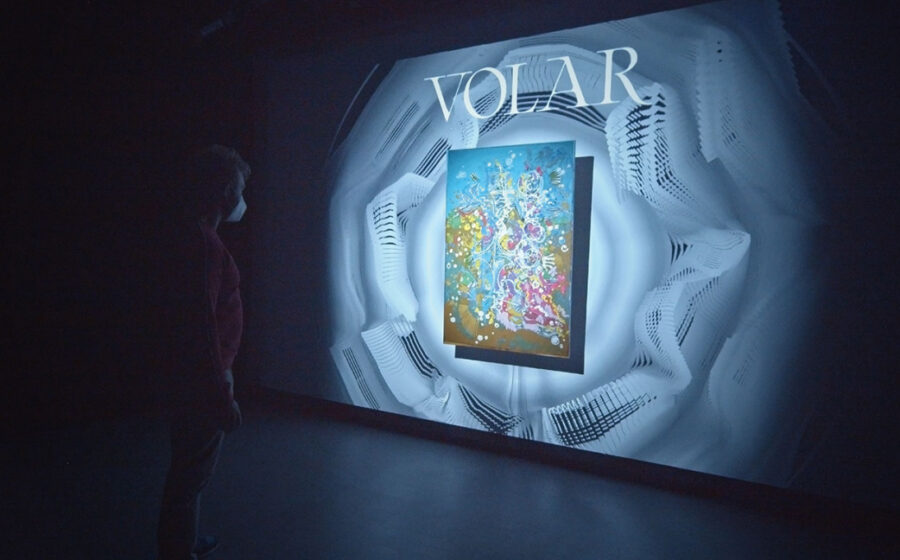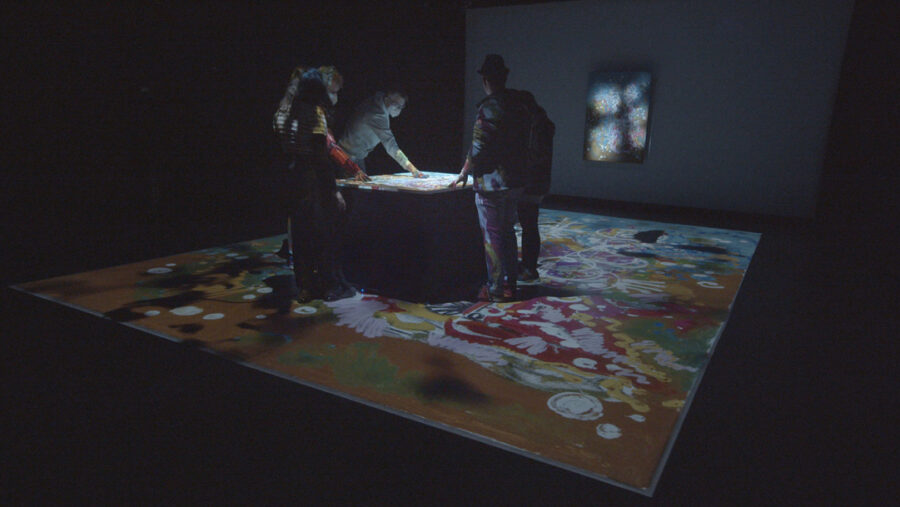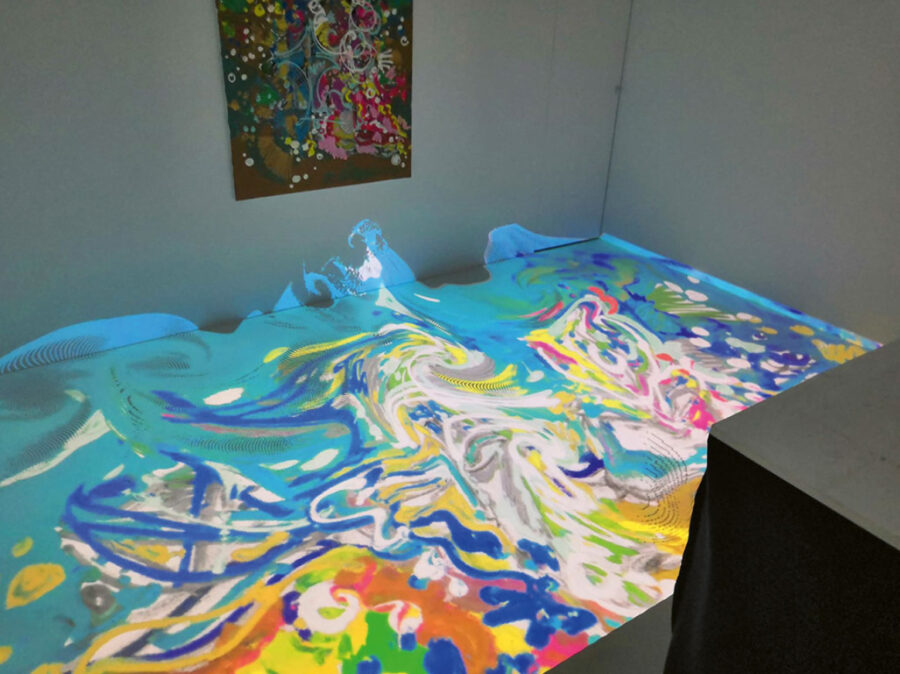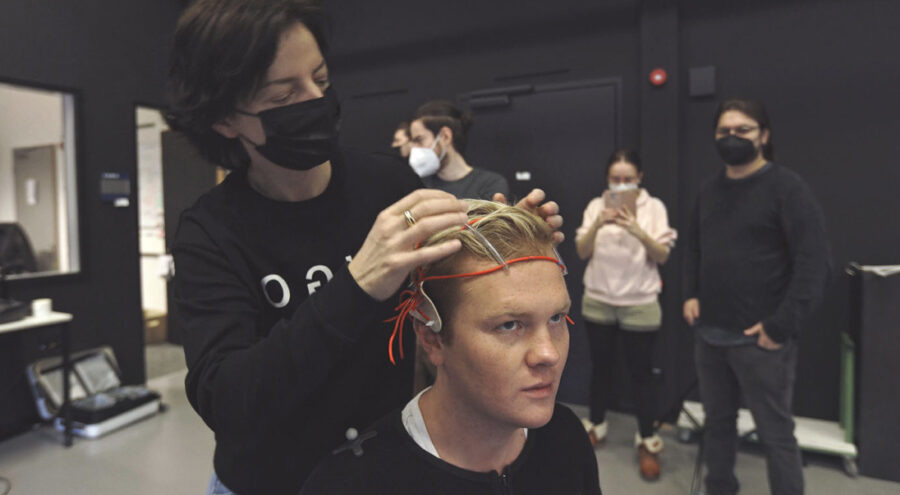VOLAR: Interactive Spatial Art Experience





Description
The Virtual Design masterclass at Kaiserslautern University of Applied Sciences wondered what the art exhibition of the future might look like. Together with the artist Leon Löwentraut, the team of students wanted to put together an experimental and interactive answer. The aim was to veer away from the outdated conventions of traditional exhibitions and to enthuse a young public for art.
One of the central starting points was to make the creation process of a painting and the emotions of the artist more understandable. For Leon Löwentraut, painting feels like flying – and it is precisely this that was to be made tangible for outsiders. The students wanted to develop a spatial experience that enabled this feeling to be conveyed both analogously and digitally.
The result is VOLAR (Spanish: to fly), a hybrid exhibition form that makes processes behind the work visible that are otherwise hidden, thereby enabling a unique experience. Through narrative and interactive elements, the public experienced in a novel manner how data is transformed into an impressive story of “flying”.
Various state-of-the-art techniques were used to make it possible to experience the painting in a dynamic dimension. First of all, Leon Löwentraut’s brain activity during painting was recorded by means of electroencephalography. This allowed the creation of a visualisation that enabled the viewers to understand the choice of colour and the state of flow.
The painting was scanned in 3D and also printed to create an interface that formed an interactive surface. A 270-degree projection blurs the boundaries between real and digital. VOLAR thereby forged a new connection between analogue art and digital content.